

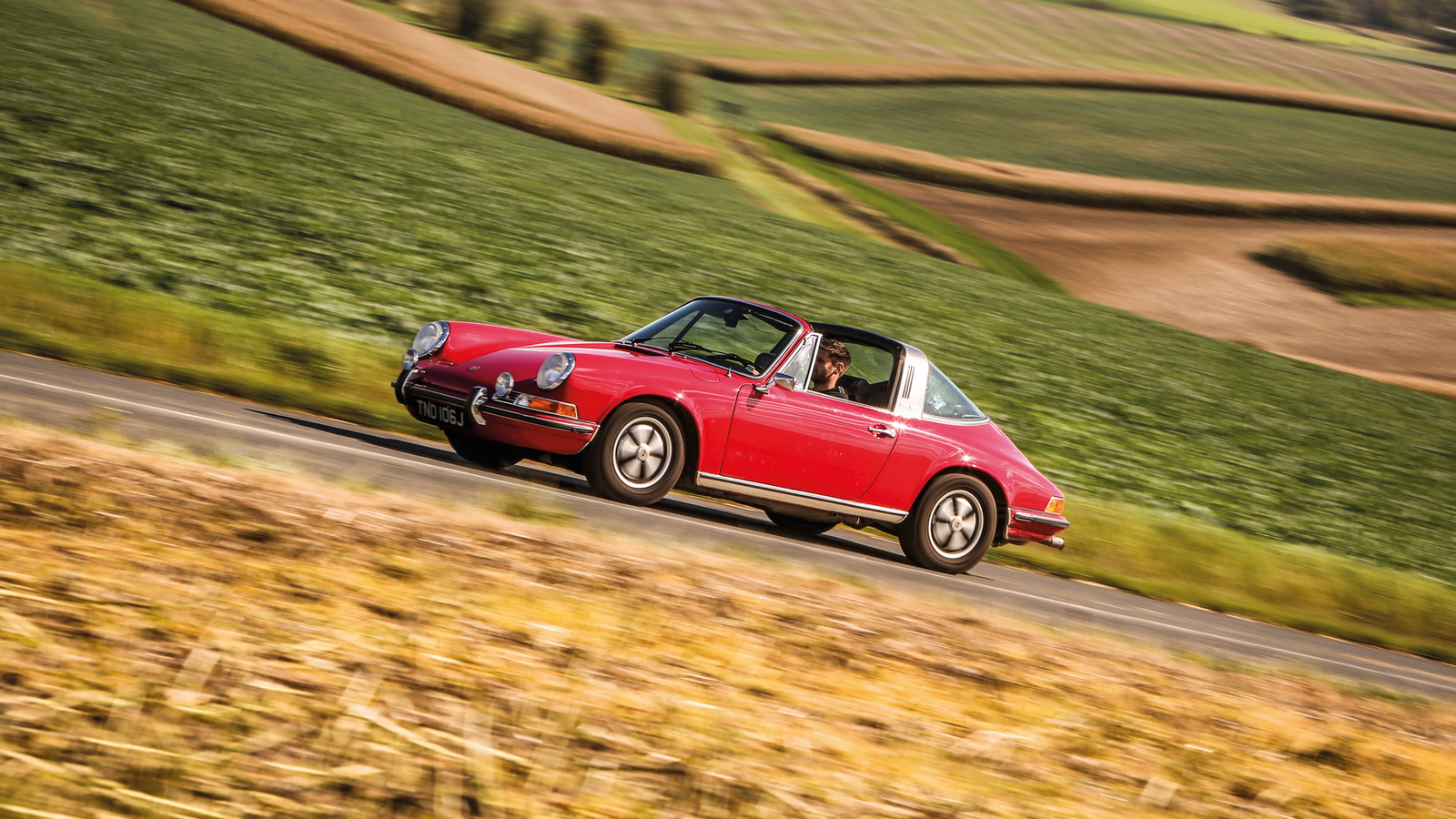











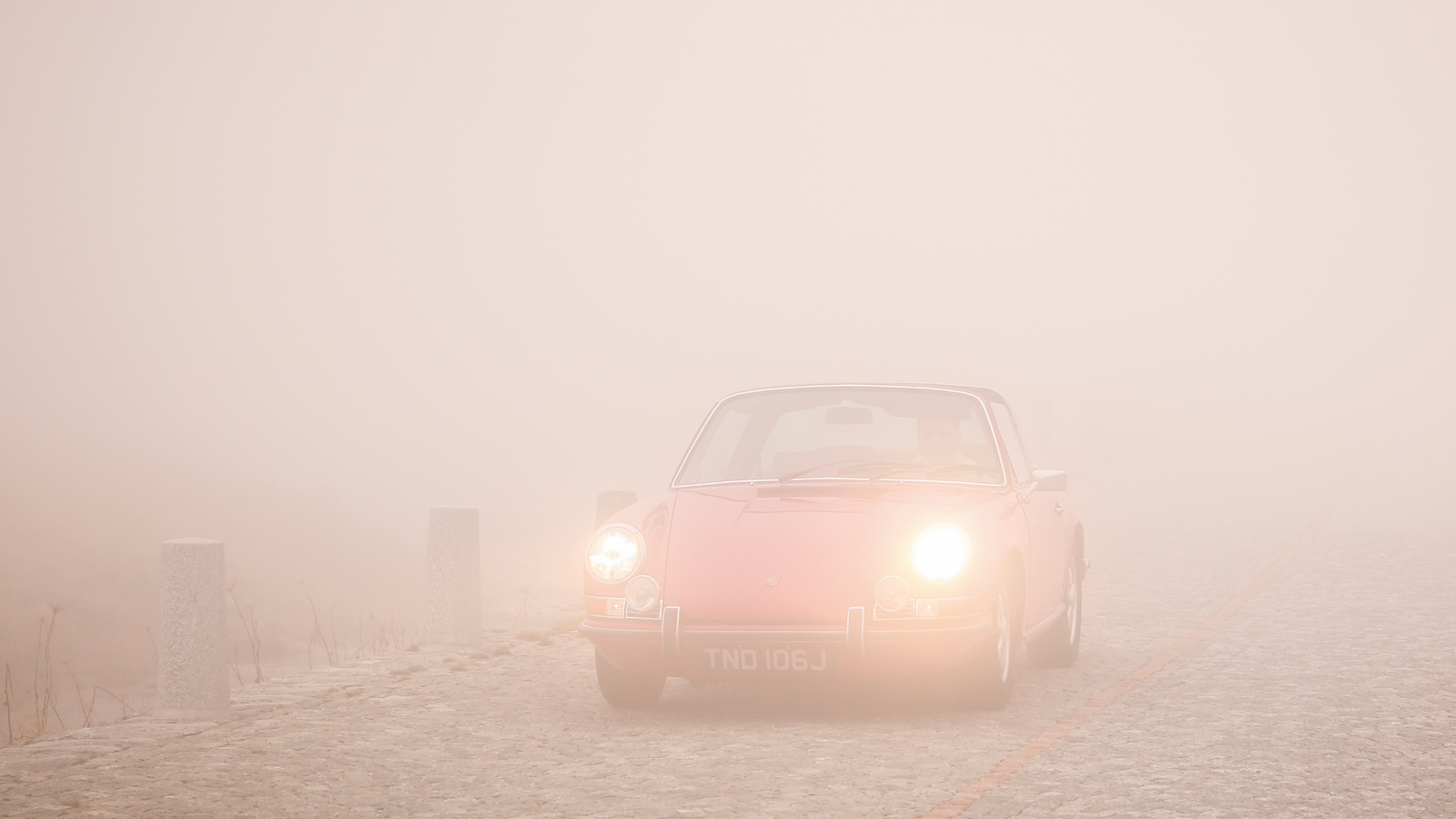
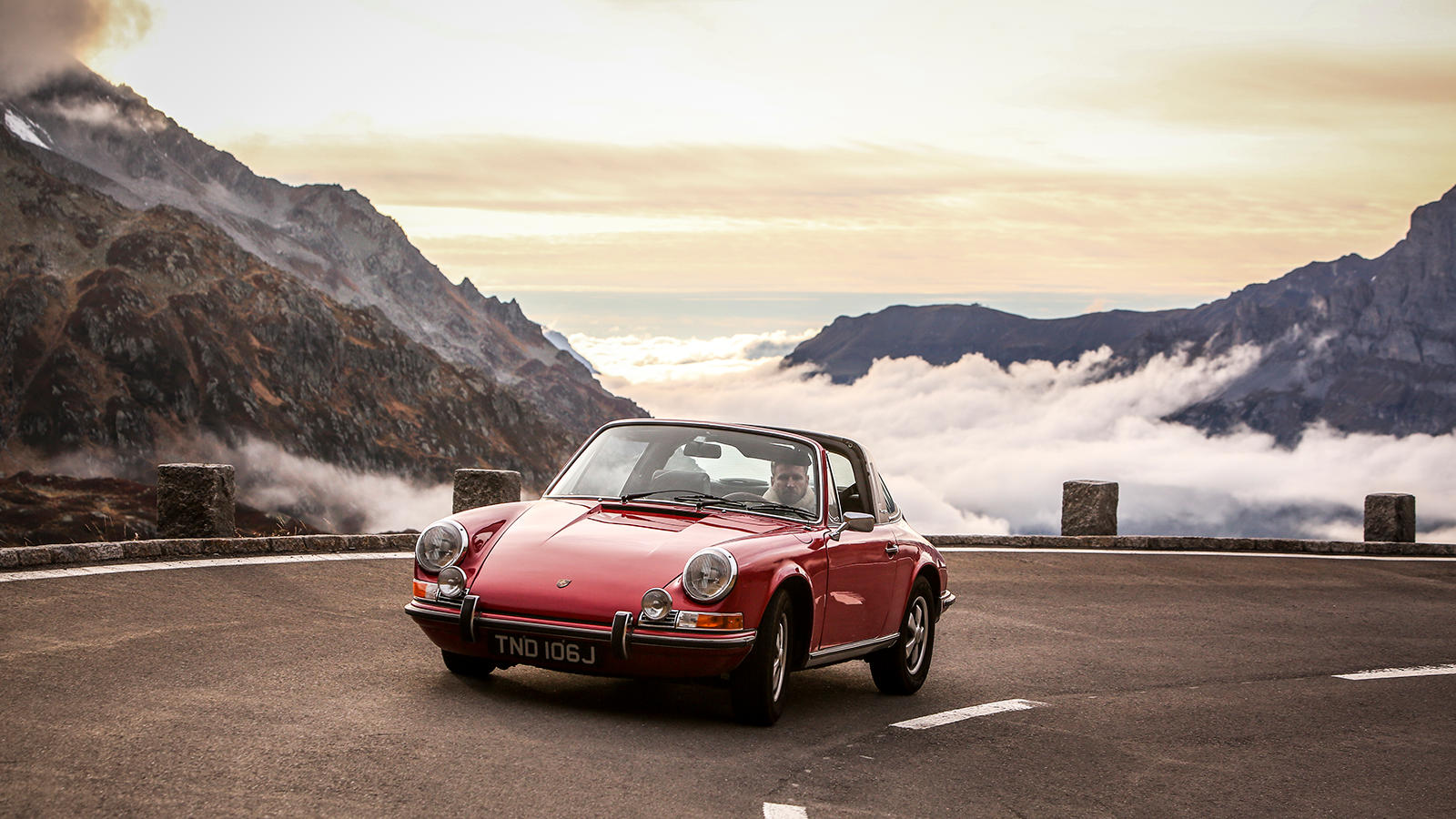















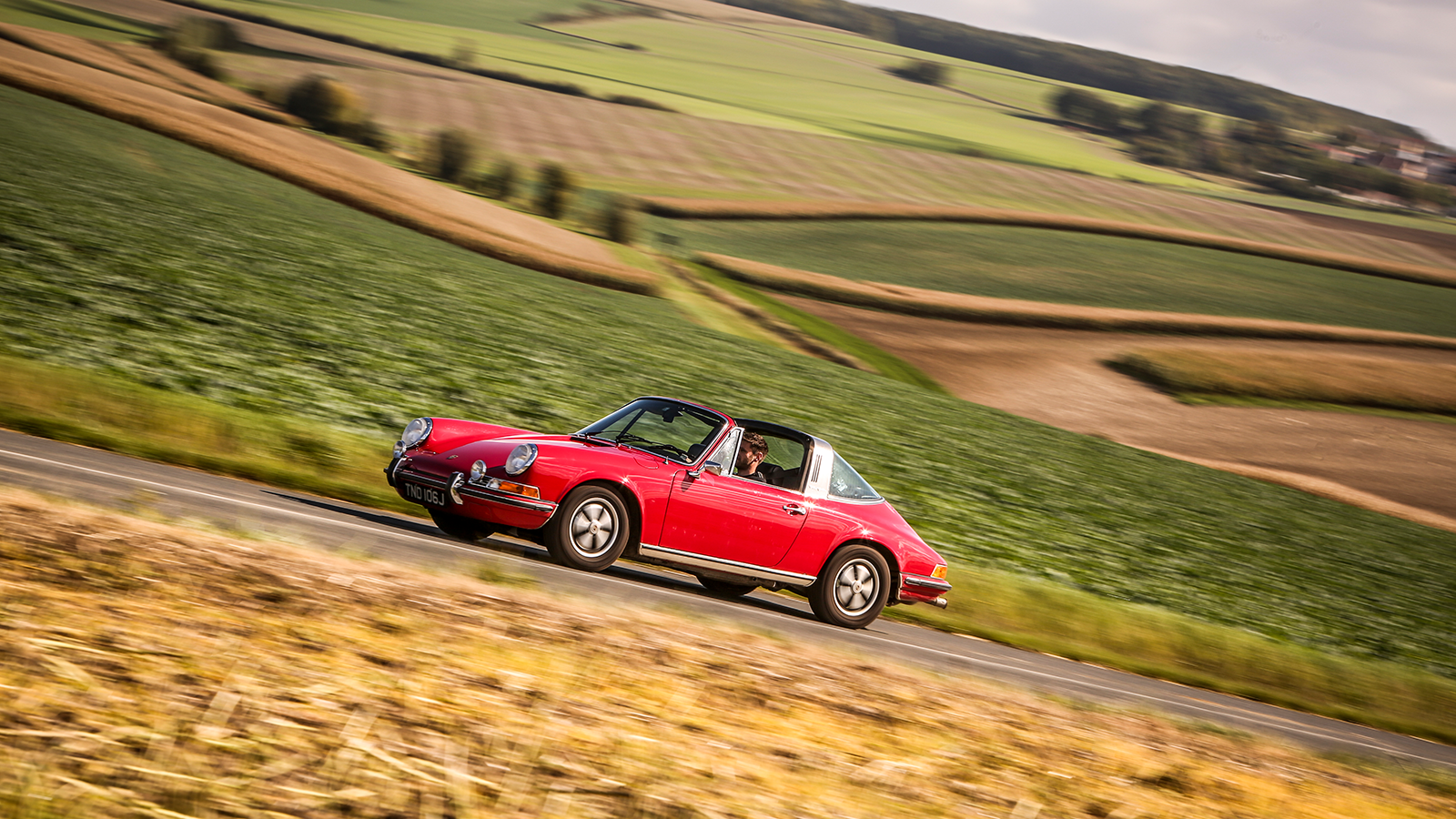
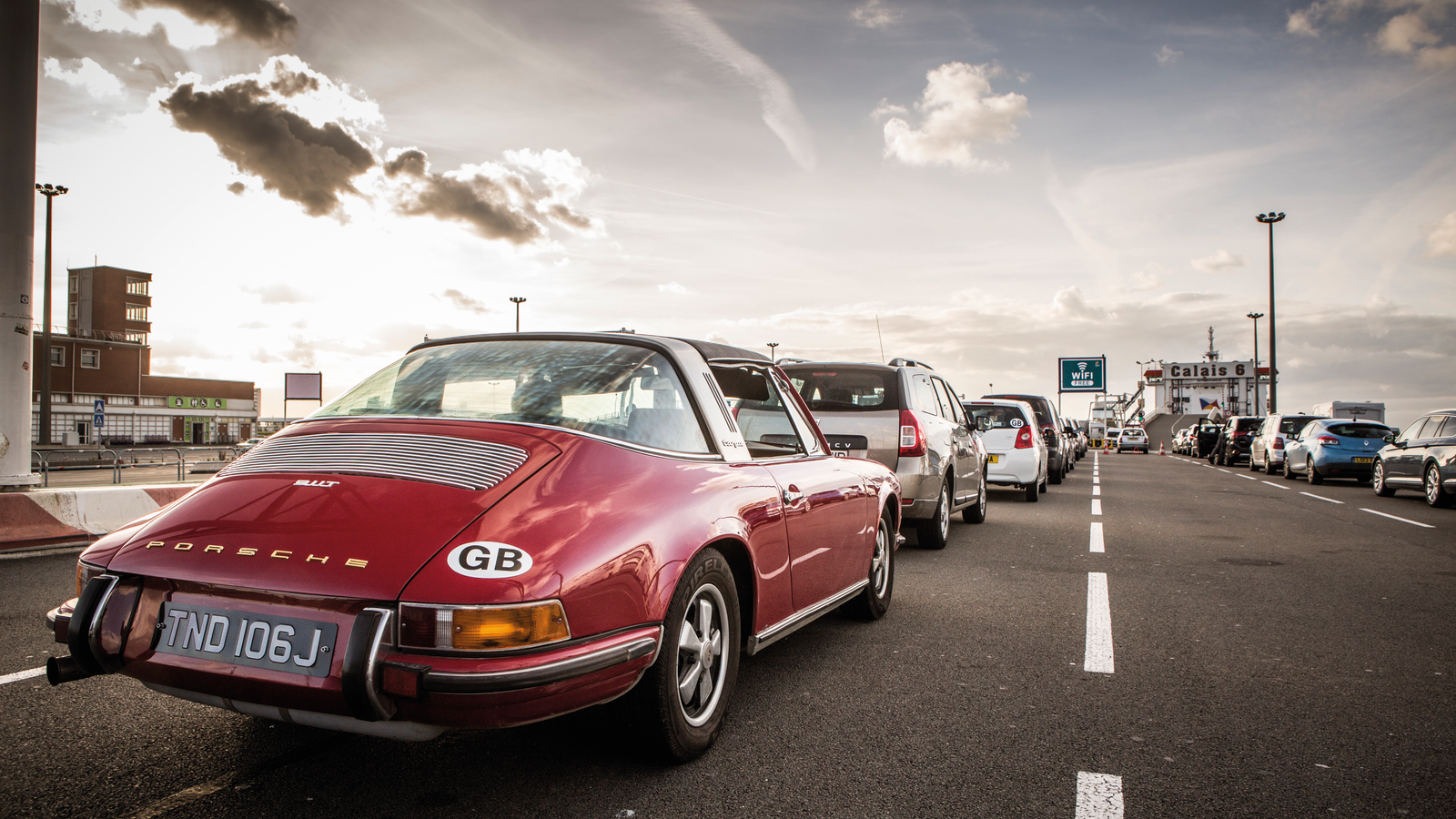

2000 miles across Europe in a perfect targa
As a general rule, people don’t hand over the keys to their Porsche 911 with no strings attached. It’s the kind of proposition dreams are made of, and the likelihood of it happening sits somewhere between a lottery win and a factory drive with a Formula 1 team.
Imagine our surprise, then, when we received a call from a reader with a problem he thought we could help with: how to get a 1971 Porsche 911 targa from central Italy to the UK in three days.
Naturally, we were only too happy to help – and so, as our faces began to ache from grinning, we set out on the road trip of a lifetime.
Our route would take us above the clouds, to abandoned race tracks, along mountain passes and through wine country – all in a 45-year-old Porsche. Here’s what happened.
(Road trip undertaken before the COVID-19 pandemic)
Better with age
The 911 targa hasn’t always been as desirable as it is today. It fell foul of US Federal Regulations (or the threat of them), so Porsche opted to add a stainless-steel rollover bar that, to many eyes, detracted from the organic lines of the tin-top 911.
But the passing of time has been kind to the targa and the tall hoop-and-glasshouse combo gives the open version its own character, making a model that’s perfectly suited to grand touring.
At home in the country
In modest 125bhp ‘T’ tune, this 2.2 targa was never going to set the world alight in terms of outright performance, but it comes into its own in the Italian countryside.
There, the torque of the carburetted engine really hauls, and the simple-to-operate pop-out roof section opens occupants up to the sights and smells of the outside world, but without the buffeting and wind noise of a full convertible.
Started out Stateside
Given Stuttgart’s capitulation to North American legislation, it should come as no surprise that ‘our’ targa was delivered new to the States, spending much of its time in the rustbelt.
Look closely and you’ll see a parking permit for RV manufacturer Coachmen Indiana in the window, alongside a sticker for Williams Crawford, the marque specialist that worked on the car after it came to the UK.
Suits you, sir
Restoration manager Graham Kidd spearheaded a light rebuild, which included making the car safe and sorting a patchwork of poor repairs prior to a colour change to Ruby Red, a shade that suits the targa well.
Though the restoration was largely cosmetic, the Porsche drives incredibly well – like a sharp suit paired with your most comfortable slippers – and we feel at home as soon as we climb aboard.
Home of the Prancing Horse
After a sighting drive around the twisting back roads of Umbria, our first stop is the Mugello Circuit in Tuscany.
Despite being the property of Ferrari, the 5.2km track plays host to the Porsche Club Italia’s annual Porsche Festival, and the sun-drenched paddock area is packed with every model imaginable, from the brutal 914-6 to 2017’s Le Mans contender.
Caffeine-fuelled
Leaving the festival, there’s just enough time for an ill-advised Lampredotto – allegedly a Florentine ‘delicacy’, but soon discovered to be tripe – before hitting the road again.
Hoping to make Lake Como before nightfall, we vary our route between the free-flowing motorways and quieter back roads, stopping for cappuccinos at regular intervals.
Perfect playlist
As the terrain becomes more hilly and the signature cypress trees give way to signs of northern industry, we reach a series of lengthy tunnels: the perfect opportunity to revel in the car’s flat-six soundtrack.
Into darkness
With left-hand-drive, overtaking is a breeze and we spend the afternoon with the throttle pinned, the jagged line of Alpine mountains rising slowly as day gives way to dusk.
We’re thankful to finally stop, washing down hearty pizza with beer before turning in.
Keeping out the riff raff
Most of the tourists who visit Lake Como do so in the hope of stealing a glimpse of George Clooney, but to the petrolhead the lake is more synonymous with the Concorso d’Eleganza Villa d’Este competition.
The event holds a public day at nearby Villa Erba, but we’re sadly barred from such expensive establishments.
Better at speed
We head up the eastern shore in search of a view. Houses and villages line and overhang the road, creating a tunnel of noise as our 911’s exhaust reverberates around the walls, which at points become so narrow that we breathe in as we pass oncoming traffic.
In typical Italian fashion no one slows down, so we too press on, revelling in the air-cooled clatter as we fire up through the gears: the 911 is more comfortable at pace, its six-cylinder engine bucking at low speeds.
Rising high
The further north we drive, the higher we seem to climb, until the sailing boats and luxury Riva launches become like toys in a bath far below.
Getting away from the narrow lakeside road requires an ascent up a severe incline, and a number of back-to-back hairpin bends that leave us praying not to meet anyone on their way down.
Boring equipment
Crossing the border into Switzerland, we decide to stick to smaller roads as we head north, climbing gradually higher and passing through increasingly rural towns and villages that, far from the Alpine ideal, seem starkly industrial.
The landscape eventually opens up as we pass through a deep ravine lined with mountains, the incredible scenery juxtaposed against a Brutalist building shadowed by an enormous drill bit from one of four boring machines used to excavate the 57km Gotthard Base Tunnel, the world’s longest rail tunnel.
Pushing the motor
We head for the St Gotthard Pass, a winding section of road that crosses the peaks of the southern Alps. As the strip of Tarmac narrows, the gradient increases and the gutsy 2.2-litre flat-six works harder to keep pace, forcing us to drop down to second gear for tight switchbacks.
The weather also begins to close in. The dark and foreboding clouds we spotted from the valley floor become thicker with every metre, the temperature plummeting.
Zero visibility
In no time we’re among the clouds, snow markers at the roadside obscured while cars fore and aft disappear into the murk.
Despite the worsening conditions, we steer the Porsche off the Armco-lined trail and on to the cobbled surface of the original route, which runs alongside the newer passage.
Metal railings give way to concrete markers and the clouds ease slightly, though the spectacular peaks and snow-capped mountains are still draped in an impenetrable blanket.
Passing from pass to pass
After reaching the crest of the 2108m pass and its unsettling combination of sheer drops and claustrophobic, menacing weather, the road descends towards a series of tunnels littered with roadworks and red lights that impede our progress.
Then, just over a mile later the road again arcs upwards, hugging the mountainside closer than before with sharper turns that require a deal more concentration as we head for the Susten Pass.
A view to drive for
We enter another tunnel, breaking through to the other side of the mountain to find an incredible vista stretching out before us.
Shafts of sunlight streak across the blue sky, lighting the clouds from above to a brilliant white, and turning the vast meltwater lake at the foot of the 4km-long Stein Glacier an ethereal shade of blue.
Up in the clouds
After moving the car closer to the lake for a photo opportunity, the bank of cloud that had so caught photographer Baker’s eye begins to roll up the mountainside, and before long the entire view is consumed and visibility drops away.
Just as we’re packing up to move on, the unmistakable thrum of a flat-six – and then a second – fills the valley, and a 1987 Carrera 3.2 and ’68 911 pull up alongside.
Air-cooled enthusiasts
The cars are driven by Porsche nuts from Germany – Marc Küllenburg, Tommi Brkovic and Gregor Mikolaschek – and within seconds we’re chatting about all things aircooled.
While the Carrera is as it was when it left the factory, the earlier car – imported from California by Küllenberg – has been modified extensively, with a 270bhp, 2.7-litre engine.
Giving chase
With the light fading fast we stow our equipment, replace the roof panel and follow our new friends down the mountain, catching up with the pair at a set of lights before giving chase through a tunnel.
Despite its entry-level spec, the targa is quick enough to keep up – just about – and for the next few miles we bob and weave to carry as much speed as possible through the tight hairpins and long sweepers.
Making for the lake
The Germans’ cars are noticeably faster, and after a while we lose their tail-lights around another bend and ease off before getting too close to our 911’s limit – not something we’re keen to discover on these misty mountain roads, lined with shadowy trees and sharp drops.
Both lead cars eventually pull over for another photo session but, with the darkness now near-complete and still a few more hours’ journey until we reach our overnight stop at Lake Lucerne, we beep our horn and blast off into the night to make up some ground.
Storied collection
We decide to set off early and clear Switzerland as quickly as we can, stopping only for fuel on the way to Mulhouse in France and the celebrated Cité de l’Automobile – formerly known as the Schlumpf Collection.
The museum houses just a handful of Porsches, which are lost in a sea of pre-war Bugattis – the result of an obsessive drive by the Schlumpf brothers to buy every Bug they could lay their hands on.
Mixed feelings
Despite offering one of the most incredible selections of vintage machinery in the world, the collection carries an air of sadness and the weight of a tumultuous past.
The cars eventually found their way into public ownership following a hostile takeover of the Schlumpf factory by militant workers, as the brothers fled to nearby Switzerland.
It’s a jaw-dropping sight, but many of the cars are not in working condition and seem destined to sit for ever in their carefully manicured, gravelled parking spaces.
Protected from the elements
By now, the Alpine weather we’d managed to outrun on the way to France is catching up with us, so we jump back into the car and put the hammer down on the motorway.
For the first time in the journey heavy rain hits hard, so we’re glad to have refitted the roof before leaving the Schlumpf.
Hidden gem
Our next destination is also a museum, albeit one that few enthusiasts have heard of: the Musée de l’Automobile in Lorraine. The venue only opens on a handful of afternoons, but the curator’s right-hand man, Patrick Luko, is glad to bend the rules and ushers us in.
It’s a real struggle to find but it’s well worth the effort: dozens of exhibits fill the main hall, each arranged in chronological order around the outside, with larger middle sections devoted to later eras.
Changing faces
Among the hidden gems are a highly original Porsche 356 Speedster, a BMW 2002 touring and 1953 Lagonda 3 Litre number one, as first owned by David Brown, which is one of several cars in the collection that belong to Luko.
“About 85% of the vehicles on display belong to private individuals,” he explains, “and the exhibits are changing all the time. We usually have an NSU Ro80, but its owner took it to a gathering in Germany earlier in the year.”
Faded heritage
No road trip through northern France would be complete without paying homage to the forgotten grandeur of the Reims-Gueux circuit, which played host to top-flight motorsport from its opening in 1926 through to the late 1960s, eventually closing for good in 1972.
You can still drive large sections of the track, including the long, straight drag past the pits, which survive just as they were when they were abandoned all those years ago – though the evocative advertising has been restored by a dedicated band of French enthusiasts.
Fruitful venue
Despite the more vibrant colours, the sense of history is palpable – and Porsche has a long history with Reims, from the 1956 class-winning 550RS to the 718s of Jo Bonnier and Dan Gurney, which were pipped to victory by the Ferrari Dino 156 of Giancarlo Baghetti during the Italian’s Grand Prix debut in 1961.
Back where it belongs
Though just about as far from a competition model as you’re likely to find in the Porsche stable, the targa seems at home when parked alongside the old BP-liveried timing house.
Its rorty exhaust sounds the business as we roll past the pits before rejoining the main road and turning briefly south.
Into wine country
Away from the faded glory of Reims, the landscape is laced by row upon row of grapevines, dedicated predominantly to the production of champagne; the best way to explore the area is via the Route Touristique du Champagne, which winds through the villages and vineyards of the Parc Naturel Régional de la Montagne de Reims.
Dream scenery
Heading further into the national park takes us through a string of chocolate-box French villages with exotic names and the scenery is breathtaking at points.
The twisting lanes eventually give way to a stunning, tree-lined avenue outside Damery, which we blast along, revelling in the 911’s turn of pace.
To the ferry
Not for the first time, we’ve become caught up in the excitement of exploration – but with a ferry to catch there’s no time to hang about, so we point the Porsche towards the nearest autoroute and wind up the eager flat-six, flicking into the outside lane and making the most of the quiet péage.
End of an adventure
It’s with more than a tinge of sadness that we eventually reach the ferry port, at the culmination of three days and over 1800 miles of driving.
And with it, the sun sets on a great adventure. By all accounts we should be desperate to see the back of the little Porsche, but in truth it has been exceptional.
How about a return trip?
It may not be the most sporting, the most beautiful, nor indeed the most desirable 911, but our charge has been comfortable, quick and engaging, and the perfect companion for this epic trans-European tour.
Our biggest challenge is handing back the keys.
